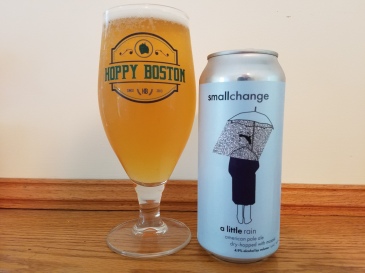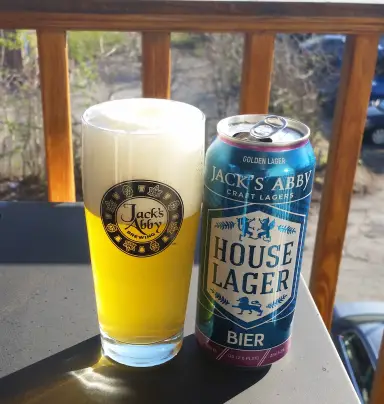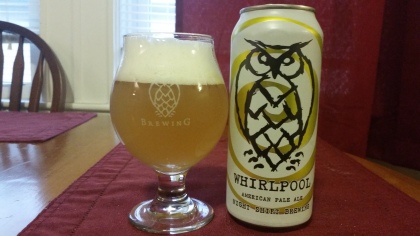
There has never been a better time to be a beer lover. With over 7000 breweries in operation in the US, with each cranking out rotating selections of beer, we have nearly limitless options across a wide range of styles and flavor profiles. Some beer drinkers are taking full advantage of their freedom of choice, rarely drinking the same beer twice as they aim to try every possible new release from their local breweries. This would seem to be a boon for small breweries that crank out three or four different small batches of new beer a week (many of which are the same beer with slightly different hop profiles), while also presenting a big problem for regional and national breweries that rely on scale, distribution, and consistent production. There was enough concern about the potential decline of flagship beers that a group of beer writers and breweries started the #FlagshipFebruary movement, encouraging everyone to drink flagship beers this month. I actually think the opposite is true, while some brands can thrive on a constant churn of different beers, in this increasingly crowded market it is more important than ever for a brewery to establish a strong core of flagship beers.
Here are some reasons why I think having a strong flagship beer (or three) is critical for almost any brewery, especially breweries that rely on distribution:

1. All of these choices can be overwhelming: I follow the local beer scene pretty closely, I do write a blog about local beer, and even I can get overwhelmed by the number of breweries and beers available for purchase. I know for a fact that many people who love beer, but don’t have the time or energy to follow breweries on social media and keep track of all of the beer releases, can really struggle to pick a beer when they stop for a 4-pack, so they tend to go back to old favorites as often as they try new things (especially if they’ve been burned by too many subpar beers in the past). These customers might not post pictures of their beers on Instagram or check-in on Untappd, but they can drive significant sales for a brewery that delivers a tasty and readily available flagship.

2. The people who are chasing every new release are still a small segment of the craft beer community: Those of us that spend too much time on #beertwitter and #Beerstagram (or is it #Instabeer?) can start to believe that the average craft beer fan is the people we are interacting with on these social sites. Hardcore beer geeks are an important group, and the buzz created in these communities can drive big sales, but there are many more craft beer fans who are more casual about the hobby. These people will be much more likely to continually re-visit the same brands that they have enjoyed in the past, and are the key demographic for a well-crafted flagship brand.

3. Brand recognition is key: I can’t believe how underrated branding has become in craft beer. Many breweries have beautiful can art, but they make it extremely difficult to identify the brewery that made the beer (some also have no beer style on the label, but that is an issue for another day). I know that I have a defined group of local breweries that I implicitly trust, I will try anything they make because they rarely steer me wrong. You know what all of these breweries have in common? They all make exceptional flagship beers that are a regular part of my rotation. These flagships are usually the introduction most customers have to your brand, and when they are done well the same customers will be much more likely to not only buy those beers again but also try other releases.

4. Quality and consistency shine through: When a brewery never (or rarely) make the same beer twice I start to seriously question if they have the ability to successfully reproduce a recipe. Ask a professional brewer for their thoughts on Budweiser sometime. While they may have major issues with InBev’s business practices and prefer other beers to Bud, they will probably also rave about the ability of the brand’s brewers to make such a consistent product on large scale in different breweries across the country. As breweries expand and head into distribution it becomes more and more critical that they make a consistently high-quality product, so every can or pint that a new or returning customer tastes is flawless and delicious. Hitting these marks leads to repeat customers, and even to some measures of brand loyalty, which is the most important thing for a growing business.

5. Less common styles can shine if done well: Most breweries would love to have a hugely popular IPA, the sales are so strong for the style, but some breweries are finding success making a stellar version of a less buzzy style. Allagash supports their innovation and barrel programs on sales of their quintessential witbier Allagash White, widely considered the pinnacle of the style. When Mayflower revamped their lineup it is no surprise that their delicious porter was retained, even ardent hopheads know that is a quality version of the dark style and will have a pint here and there. While hoppy beers and other popular styles like stouts and sours will continue to drive sales for most breweries, being known for making a stellar version of a less common style can be a boon too.
Those are the top reasons why I think flagship beers are more important than ever, so with that I will throw it to my readers. Are there other reasons you love flagship beers that I missed? Or do you take the other side, and argue that flagships are going to die in the age of beer choice? Let me know your thoughts below or on social media, and enjoy some flagship beers for #FlagshipFebruary!
